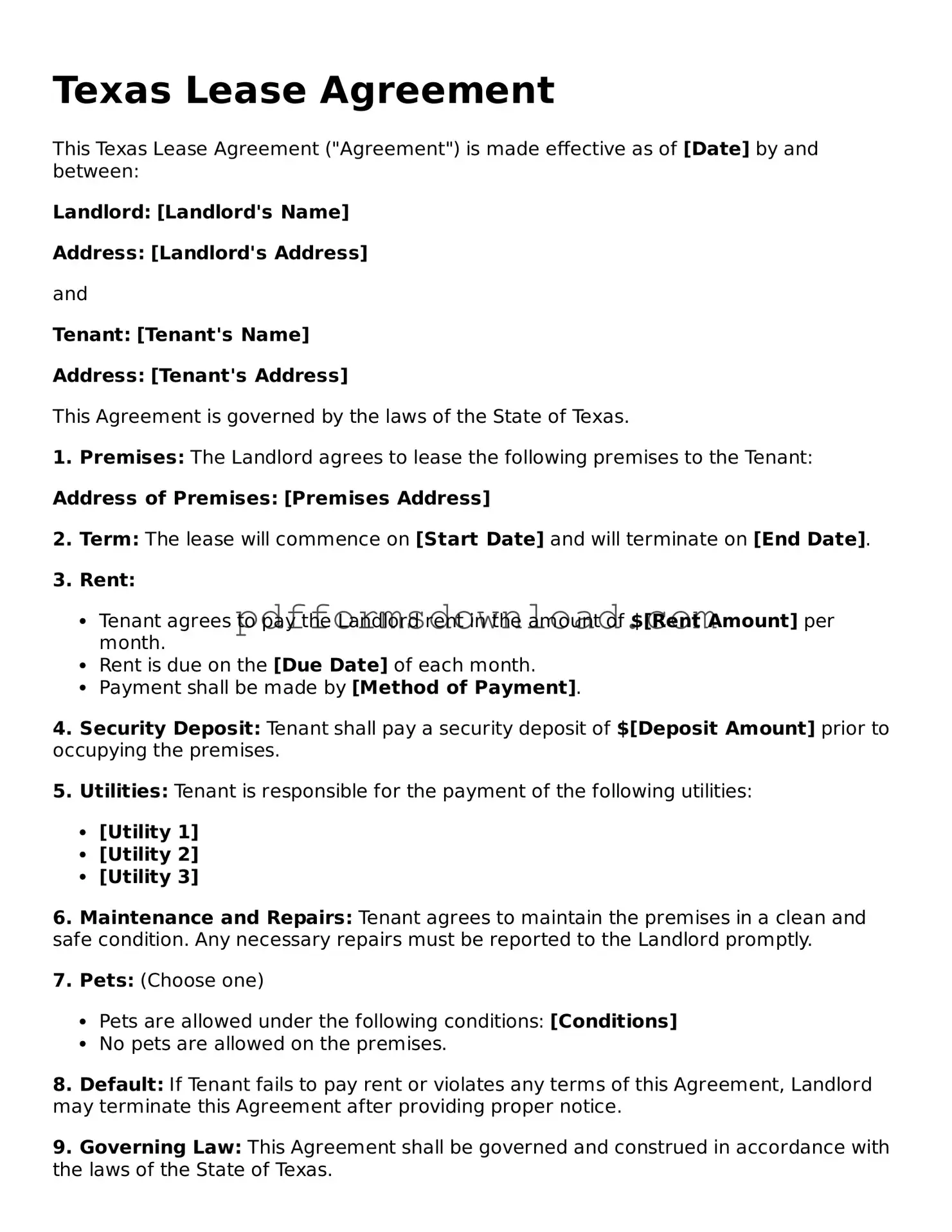What is a Texas Lease Agreement?
A Texas Lease Agreement is a legal document that outlines the terms and conditions under which a landlord rents property to a tenant in Texas. This agreement includes important details such as the rental amount, duration of the lease, and responsibilities of both parties. It serves to protect the rights of both landlords and tenants and ensures clarity in their relationship.
What should be included in a Texas Lease Agreement?
A comprehensive Texas Lease Agreement should include several key components. These typically encompass the names of the landlord and tenant, property address, lease term (start and end dates), rental amount, payment due dates, security deposit details, maintenance responsibilities, and rules regarding pets or alterations. It’s also wise to include clauses about termination and renewal options.
How long is a typical lease term in Texas?
Lease terms in Texas can vary widely. Most residential leases are for one year, but they can also be month-to-month or for a shorter duration. The length of the lease should be clearly stated in the agreement. Both parties should consider their needs and circumstances when deciding on the lease term.
What happens if a tenant needs to break the lease early?
If a tenant needs to break the lease before its term ends, they should review the lease agreement for any specific terms regarding early termination. Many agreements include penalties or require notice to be given. Communication with the landlord is essential, as they may be willing to negotiate or allow for subletting the property.
Can a landlord raise the rent during a lease term?
Generally, a landlord cannot raise the rent during the lease term unless the lease specifically allows for it. Rent increases typically take effect only after the lease has expired and a new agreement is signed. However, if the lease is month-to-month, the landlord may provide notice of a rent increase as stipulated in the agreement.
Is a written lease agreement required in Texas?
While a verbal agreement can be legally binding in Texas, it is highly recommended to have a written lease agreement. A written document provides clear evidence of the terms and conditions agreed upon by both parties. This can help prevent misunderstandings and disputes in the future.
What are the tenant's rights under a Texas Lease Agreement?
Tenants in Texas have several rights under a lease agreement. These include the right to a habitable living environment, the right to privacy, and the right to receive proper notice before eviction. Additionally, tenants have the right to have their security deposit returned within a specified timeframe after moving out, minus any lawful deductions.
What should a landlord do if a tenant violates the lease?
If a tenant violates the lease agreement, the landlord should first review the lease to understand the specific violation and any remedies available. Communication is key. The landlord may choose to address the issue directly with the tenant or provide written notice of the violation. If the problem persists, legal action may be necessary, but this should be approached carefully and in accordance with Texas law.
